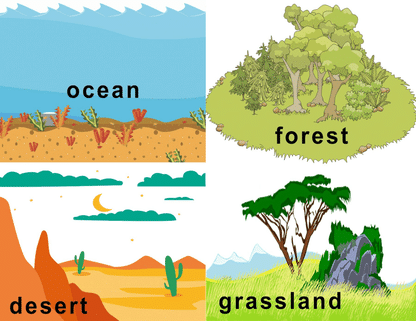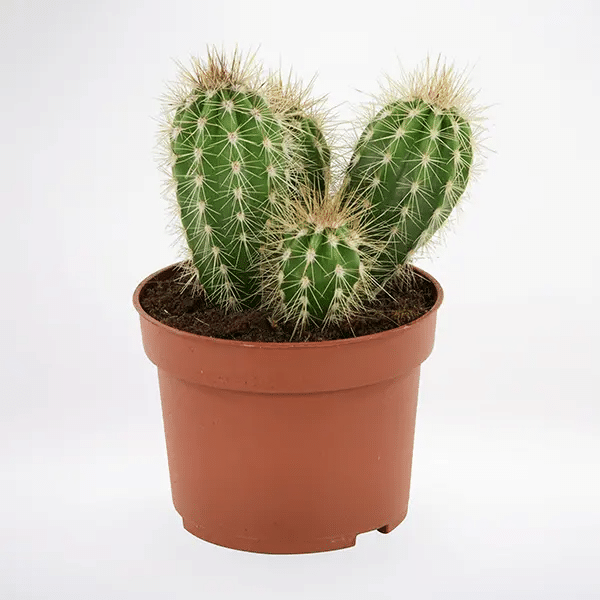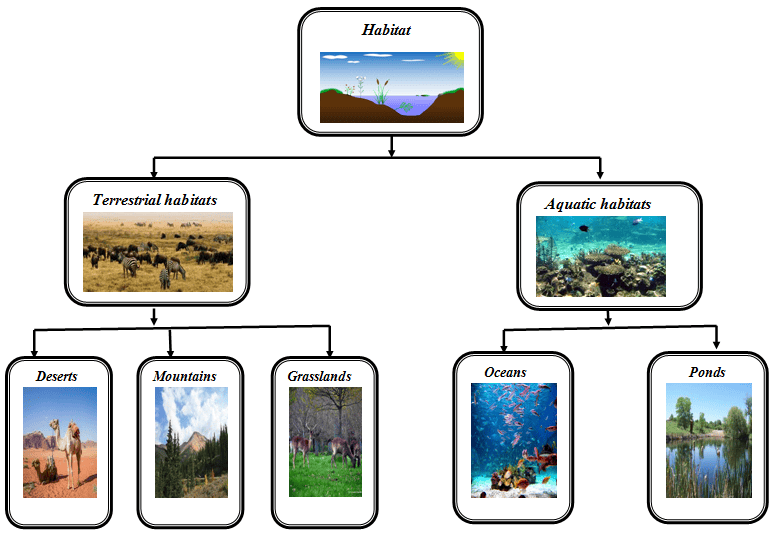NCERT Solutions for Class 6 Science - The Living Organisms - Characteristics and Habitats
Q1. What is a habitat?
Ans: Habitat means a place to live (a home). The surroundings where organisms live is called a habitat. The organisms depend for their food, water, air, shelter and other needs on their surroundings. Several kinds of plants and animals may share the same habitat.
 Different Habitats
Different Habitats
Q2. How are cactus adapted to survive in a desert?
Ans: Cactus lose very little water through transpiration. The leaves in cactus plants are present in the shape of spines. This helps in reducing the loss of water from the leaves through transpiration. Its stem is converted into a leaf-like structure. The stem is also covered with a thick waxy layer, which helps to retain water. Cactus plants have roots that go very deep into the soil to absorb water.
 Cactus Plant
Cactus Plant
Q3. Fill up the blanks:
(a) The presence of specific features, that enable a plant or an animal to live in a particular habitat, is called __________.
Ans: The presence of specific features, that enable a plant or an animal to live in a particular habitat, is called adaptation.
 View Answer
View Answer- Adaptation refers to the special characteristics or features that help plants and animals survive in their specific environments.
- For example, the thick fur of polar bears helps them survive in cold habitats.
(b) The habitats of the plants and animals that live on land are called __________ habitat.
Ans: The habitats of the plants and animals that live on land are called terrestrial habitats.
 View Answer
View Answer- Terrestrial habitats are environments on land, such as forests, deserts, and grasslands, where land-based plants and animals live.
(c) The habitats of plants and animals that live in water are called __________ habitat.
Ans: The habitats of plants and animals that live in water are called aquatic habitats.
 View Answer
View Answer- Aquatic habitats are water-based environments like ponds, rivers, and oceans, where water-dwelling plants and animals live.
 Habitat
Habitat
(d) Soil, water and air are the __________ factors of a habitat.
Ans: Soil, water, and air are the abiotic factors of a habitat.
 View Answer
View Answer- Abiotic factors are the non-living parts of a habitat, like soil, water, and air, which support life in the habitat by providing necessary resources.
(e) Changes in our surroundings that make us respond to them, are called__________.
Ans: Changes in our surroundings that make us respond to them are called stimuli.
 View Answer
View Answer- Stimuli are changes in the environment, such as light, sound, or temperature, that cause plants and animals to respond.
- For example, we respond to the cold by putting on warmer clothes.
Q4. Which of the things in the following list are nonliving?
Plough, Mushroom, Sewing machine, Radio, Boat, Water hyacinth, Earthworm
Ans: Plough, sewing machine, radio, and boat are nonliving things
Q5. Give an example of a non-living thing, which shows any two characteristics of living things.
Ans: Bus and Machine.
Characteristics
- It can move like living beings
- It needs the energy to do work
 Bus
Bus
Q6. Which of the non-living things listed below, were once part of a living thing?
Butter, Leather, Soil, Wool, Electric bulb, Cooking oil, Salt, Apple, Rubber
Ans: Butter, Leather, wool, cooking oil, apple, and rubber were once part of a living thing.
Q7. List the common characteristics of the living things.
Ans: Living things have certain common characteristics —
- They need food.
- They respire and excrete.
- Respond to their environment.
- Reproduce
- Grow and show movement.
Q8. Explain, why speed is important for survival in the grasslands for animals that live there.
(Hint: There are few trees or places for animals to hide in grassland habitats.)
Ans: In the grasslands, there are fewer trees and places to hide. The animals are vulnerable to predators (e.g., lions, tigers, wolves, etc.). They can only survive and escape if they can run faster. Therefore, speed is important for survival in the grasslands for animals (e.g., deer) that live there.
|
100 videos|261 docs|49 tests
|
FAQs on NCERT Solutions for Class 6 Science - The Living Organisms - Characteristics and Habitats
| $1. What are the main characteristics that define living organisms? |  |
| $2. How do habitats vary among different living organisms? |  |
| $3. Why is it important to study the habitats of living organisms? |  |
| $4. What are the different types of habitats mentioned in the study of living organisms? |  |
| $5. How do organisms adapt to their habitats? |  |



















